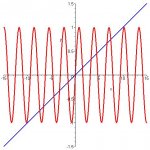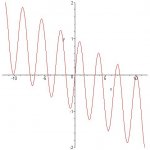i need help on this summer homework.
i don't know how to do this, so any advice, help, or showing steps/work would be great
- How many times does the graph of y = 0.1x intersect the graph of y = sin(2x)? Justify your answer
i did this problem, but want to know if my answer is correct, or if there are more steps
- simplify:[ 1/(3+x) - 1/2 ]/x
so i got[ 2 - (2+x) ]/ [ 2(x)(2+x) ]
i don't know how to do this one
- evaluate the limit: lim x-> infinity (7-x^3)/(x+6)
i don't know how to do this, so any advice, help, or showing steps/work would be great
- How many times does the graph of y = 0.1x intersect the graph of y = sin(2x)? Justify your answer
i did this problem, but want to know if my answer is correct, or if there are more steps
- simplify:[ 1/(3+x) - 1/2 ]/x
so i got[ 2 - (2+x) ]/ [ 2(x)(2+x) ]
i don't know how to do this one
- evaluate the limit: lim x-> infinity (7-x^3)/(x+6)



